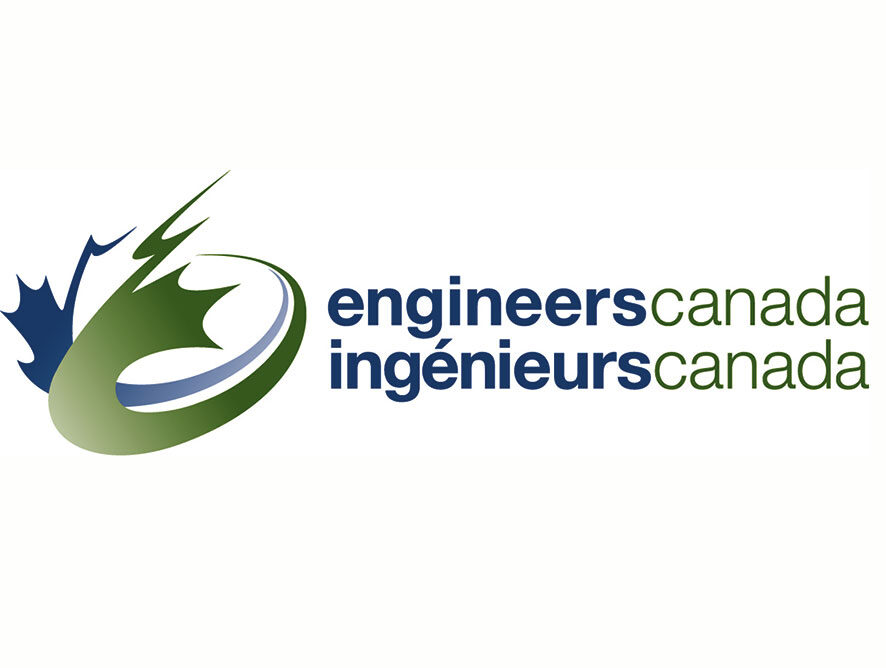 Engineers Canada is the national body that works with Canada’s provincial and territorial engineering regulators to help develop national policies and guidelines for the Engineering profession. The Professional Licensing of Engineers in Canada is regulated by the Provincial Regulating Body. Licensing is not performed by Engineers Canada. Each province or territory in Canada falls under the jurisdiction of one of Canada’s twelve engineering regulators. They are as follows:
Engineers Canada is the national body that works with Canada’s provincial and territorial engineering regulators to help develop national policies and guidelines for the Engineering profession. The Professional Licensing of Engineers in Canada is regulated by the Provincial Regulating Body. Licensing is not performed by Engineers Canada. Each province or territory in Canada falls under the jurisdiction of one of Canada’s twelve engineering regulators. They are as follows:
• Engineers and Geoscientists British Columbia
• Association of Professional Engineers and Geoscientists of Alberta (APEGA)
• Engineers Geoscientists Manitoba
• Engineers and Geoscientists New Brunswick
• Association of Professional Engineers and Geoscientists of Saskatchewan (APEGS)
• Engineers Nova Scotia
• Engineers PEI
• Engineers Yukon
• Northwest Territories and Nunavut Association of Professional Engineers and Geoscientists (NAPEG)
• Ordre des ingénieurs du Québec (OIQ)
• Professional Engineers and Geoscientists of Newfoundland and Labrador (PEGNL)
• Professional Engineers Ontario (PEO)
For Internationally Educated Engineers (IEE), the most important first step in applying is to determine where you would like to work and then contact the regulator there to learn more about their specific application process.
When applying, it is best to start as soon as possible, because it can take some time for a regulator to assess your qualifications after receiving all of your required documents. In some cases, a regulator may require you to take further steps, such as writing an examination or obtaining more education or experience.
Mobility across Canada
Engineers require a licence in each province or territory where they intend to practice. The Canadian Free Trade Agreement states that engineers licensed in one province or territory “have to be recognized as qualified to work by a regulatory body in another province or territory which regulates that occupation, without having to go through significant additional training, work experience, examination or assessment, unless an exception has been posted.” This is important for labour mobility and to ensure that engineering skills and knowledge are available throughout the country.
Engineering Regulators are responsible for licensing engineers in each province and territory. This applies to anyone looking to practice, including engineering graduates, internationally trained engineers applying for a license in Canada for the first time, and engineers licensed in one province or territory who wish to apply for a license in another province or territory.
Agreements on International Mobility
Engineers Canada is the Canadian signatory to several professional engineering agreements which facilitate mobility by enhancing Canadian engineers’ ability to work abroad and international engineers’ licensure in Canada. These agreements are designed to protect the public and maintain the good reputation of the engineering profession through effective regulation and expeditious licensure between participating countries.
Engineers Canada has directly negotiated Mutual Recognitions Agreements (MRAs) with the following organizations:
• Engineers Australia
• France (Commission des Titres d’Ingénieur, ConseilNational des Ingénieurs et Scientifiques de France)
• Hong Kong Institution of Engineers
• Engineers Ireland
• The Nevada State Board of Professional Engineers, United States
• The Texas State Board of Professional Engineers, United States
The MRAs are intended to provide licensed engineers from these bodies with an equivalent level of licensure in Canada and vice versa. Engineers Canada is not a licensing body, regulation and licensing processes vary with each different Province of Canada. Substantial information is posted on the Engineers Canada website in order to begin the licensing process for your Province of choice so that you are able to practice Engineering.
Reference: https://engineerscanada.ca




